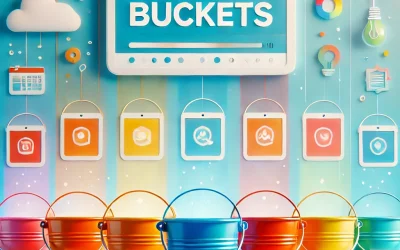You spend hours crafting a beautiful blog post full of fancy graphics and eye-opening statistics, with a couple of amusing anecdotes thrown in for good measure, but almost nobody in your target audience reads it. They don’t even make it past the headline.
It’s a frustrating experience, but it’s an all-too-common problem. According to studies, 80 percent of readers never get past the headline of most articles. Those are not good odds.
Then again, you probably do the same thing yourself. Think about the last time you searched for something on Google. When looking at the search results, you didn’t have much to go on—a title, maybe a sentence and a half of content, and that’s it. Chances are, the title alone played the biggest role in determining whether or not you clicked on the link or kept scrolling.

There’s a lot riding on a headline. It has to encapsulate the value of the article and somehow capture the attention of potential readers within a couple of seconds (or less). The same goes for YouTube titles and email subject lines. You have a few words to convince people that your article, email, or video is worth their time, and if you fail to do so, you’ll kill your content before the first word is even read or the first second of video is watched.
The greatest content in the universe simply can’t overcome a dull, confusing, or unappealing headline.
Then again, even if you convince people to read your article or watch your video, the headline will continue to have an effect on the way they digest your content. As it turns out, first impressions really do matter. A clickbait-ish or misleading headline might compel people to click on the link or open the email, but it can also impair their ability to get value out of your content. In a sense, your headline makes a promise to readers that the article must keep.
It’s tricky. Anyone who creates regular content online knows the struggle of trying to encapsulate the value of that content in a catchy headline or title. How do you turn 1,500 amazing words into an equally amazing ten-word headline? It’s a monumental task that has been the ruin of many a marketer.
Fortunately, there are a few core fundamentals you can apply when creating headlines, email subject lines, or video titles that will help you to gain a reader’s (or viewer’s) interest and help them get the most out of your content.
I recommend the four following “golden rules” to bear in mind:
#1. Specificity
Readers and viewers want to know exactly what you’re going to tell them. A vague title doesn’t interest anybody, so share some specific, key piece of information in the title, whether that’s a statistic or a main point of the article. In doing so, you are giving them a peek behind the curtain at the awesome content that is to follow.
Vague: “Write a Book!”
Specific: “How to Get Started Writing Your First Book”
#2. Honesty
As I said, your headline is making a promise to the readers about the content that is to follow. Clickbait might get readers to look at your article, but you will discourage them from future articles if you don’t fulfill the promise of the headline. A little embellishment is just fine, but an outright lie will poison the well.
Dishonest: “Become a Millionaire Overnight with One Easy Investment”
Dishonest: “7 Tips for Getting 10x (even 20x) Return on Your Investment”
#3. Creativity (but Not Too Much Creativity)
If possible, you want your headline to be entertaining, intriguing, or amusing, but don’t overdo it. If you try too hard, it will seem forced, which could turn people away.
Too Much: “10 Weird Mind Worms that Are Gnawing at the Foundation of Your Future”
Creative: “10 Misconceptions that Are Ruining Your Life”
#4. Active not Passive
Try to avoid using passive voice in your headlines. A passive headline suggests a passive article. Instead, select action verbs that best summarize the call-to-action of the article or video.
Passive: “It’s Smart to Do These Ten Things”
Active: “10 Ways to Sharpen Your Mind”
While these fundamentals apply to almost any online content, you have to approach different kinds of content in different ways. Let’s look at some practical guidelines for three specific kinds of content: blog post headlines, YouTube titles, and email subject lines.
Amazing Blog Post Headlines
#1. Make It Catchy
Blog posts benefit from catchy titles that offer useful information to potential readers. In a few short words, demonstrate your expertise on the subject at hand, using relevant keywords to make your topic understandable to both readers and search engines.
Example: “Surprising Insights About World-Changing Marketing Campaigns”
#2. Consider Using a Number
Starting your headline with a number creates an explicit promise about the amount of useful content you’re going to provide in your post. It also offers a degree of structure and organization to the content, so readers know they won’t be wading through chaos.
Example: “7 Tools Every Sales Team Needs Now”
#3. Appeal to Emotions
If you can get readers emotionally invested in your headline, they will be far more likely to read the article. Can you inspire, move, or delight readers?
Example: “How to Stand up to Your Mean Boss”
#4. Write for Your Target Audience
Think about the topics, keywords, and ideas that will appeal to your target audience. What are they looking for? What do they care about? Include specific words that you know will pique their interest.
Example: “The Ultimate Marketer’s Guide to Mind-Blowing Social Media Content”
Inspiring YouTube Titles
#1. Mind the Length
When viewers come across your video in YouTube search results or a recommended video list, they’re going to see a tiny thumbnail and about ten words of your title. If your title is longer than that, it will simply end in ellipses, and viewers won’t see the rest unless they click on the link. Make sure the words that show are interesting or meaningful. Otherwise, potential viewers may never see the rest of the title.
Example: “Three Easy Tips for Helping Your Underperforming Sales Team to Win…”
#2. Use Keywords
YouTube is the second most popular search engine in the world after Google, so treat it that way when it comes to your title. Include a word or two that will powerfully appeal to potential viewers who are searching for topics related to your content. Make sure those keywords are located toward the front of the title, so they don’t get swallowed by the ellipses.
Example: “Awesome Design Specifications for Your Next Engineering Project”
#3. Coordinate with Your Thumbnail
Your YouTube title will appear beneath or beside a video thumbnail, so make sure they work well together. If the thumbnail communicates something different from the title, you’re going to confuse people, and probably encourage them to keep scrolling. A picture of a carpenter repairing a wardrobe door next to the title, “The 5 Best Vacation Spots in Argentina,” just doesn’t make sense.
Exciting Email Subject Lines
#1. Include One
This may seem obvious, but sometimes marketers skip the email subject line, either intentionally or accidentally. However, the subject line is often the biggest factor in determining whether or not the recipient will open the email. The subject line sets the tone and gives the recipient a reason to dive into the content, so don’t forget it!
#2. Get to the Point
A typical email inbox limits the title to about 60 characters, but on a cell phone, it’s even shorter: perhaps only 20 to 30 characters. Increasingly, users are checking their email on their phones, so you’d better get right to the point! You may have fewer than ten words to entice them. Put your most important words up front and be laser focused.
Example: “Win your dream job today! Here’s how.”
#3. Make It Timely
Even if the recipient doesn’t delete your email right away, it’s easy to simply allow it to creep down their inbox and disappear into the second page. Sometimes, they think, “This might be interesting, but I’ll open it later.” However, later turns into never, and your email is gone. To avoid this, try to include a deadline in the subject or ask for a specific response.
Example: “Your last chance to revolutionize your company culture…”
Keep Them Coming Back for More
Now, the best headline in the world doesn’t guarantee the success of your online content. The article, email, or video must also provide a meaningful and compelling experience. However, if you can’t get people to check out your content, then all of your hard work is for nothing.
Think carefully about your headline or subject line. Consider testing it before hitting the “publish” or “send” button. Try some variations, read them out loud, and get feedback from trusted voices. Remember, an effective headline is authentic, not tricking people into clicking on a link, but promising them information, advice, or tips that they can implement. Make the promise, fulfill it, and your audience will keep coming back for more.
(This article was mainly talking about headlines, but if you have the rest of a landing page to write, check out this article about how to write good webinar landing pages!)
Image credit: https://mediashift.org/2017/04/13-examples-headline-magic/








